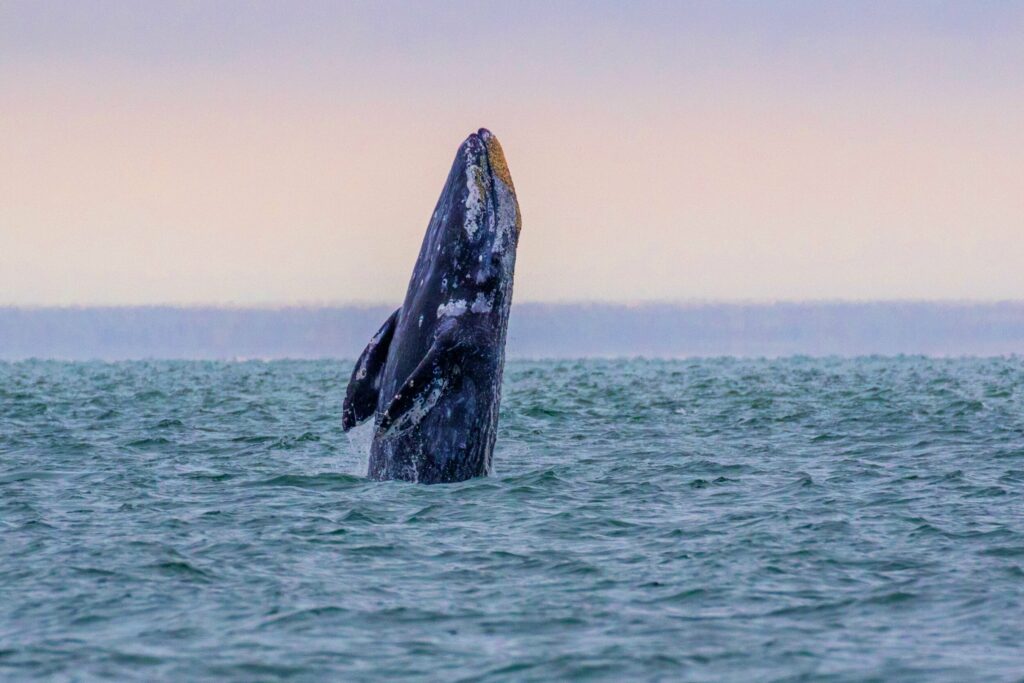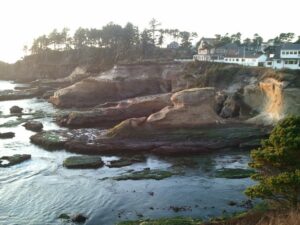By Karissa Courtney
. . . . .
Have you been wondering when the Oregon Whale Watching season is? Well, we are now in Oregon’s second peak whale watching season! From the middle of December to the middle of January, you can watch as up to 20,000 gray whales migrate from Alaska down to Baja California, Mexico to breed!
Don’t worry — if you can’t get to the Coast this time, a second migration happens in spring, from late February to May.
This year, Whale Watching Week on the Oregon Coast is December 27 – 31. You can view the Live Stream during the week this year, as all of the regularly scheduled volunteer events have been cancelled due to Covid-19.

Gray Whales
First off, gray whales are mammals. Although they look fish-like, they are very different than fish. Mammals are characterized by live births, being endothermic (warm-blooded), breathing air, lactating, and having fur/hair. While whales don’t appear to be very hairy, they do have very tiny hairs on their body, especially as calves. Interestingly, they are very closely related to hoofed mammals such as pigs, deer, and hippos.
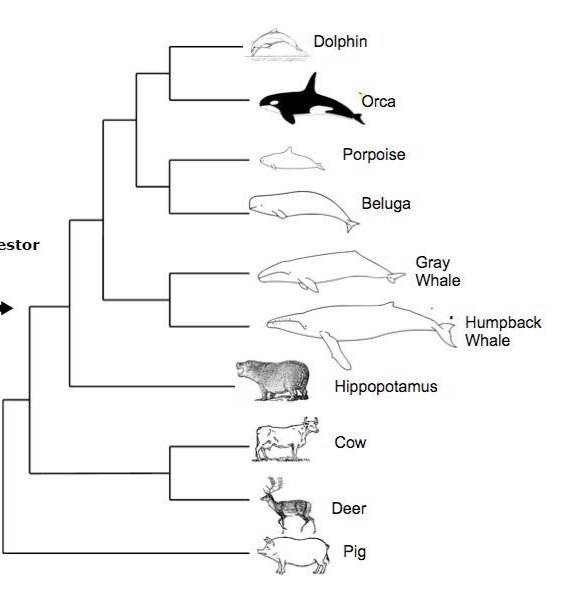
Gray whales grow to 40–50 feet long (a little longer than the length of a school bus) and weigh around 30-40 tons. They are not the largest whale – the blue whale takes that title at around 70-90 feet long.The gray whale is one of the greatest migratory animals, traveling around 12,430 miles round-trip. They make these twice-yearly migrations because they winter and breed in the shallower southern waters off of Mexico, and spend the summers in the cooler Alaskan waters. There are many different types of whales, but gray whales have baleen, made of keratin (the same stuff that your hair and fingernails are made of) that is a comblike strainer of plates on the upper jaw where they filter tiny organisms (such as plankton and tiny crustaceans) to feed upon. Off the Oregon Coast, they primarily feed on mysid shrimp. These mysids live in kelp beds and gray whales can eat up to a ton of mysids per day.
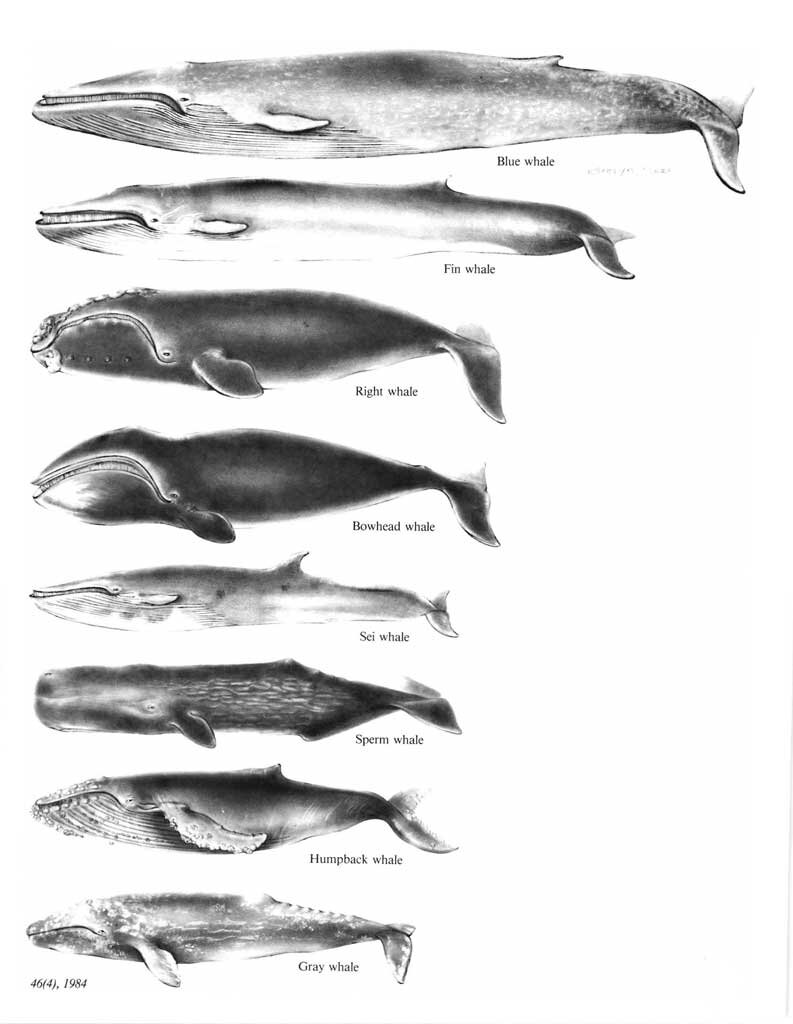
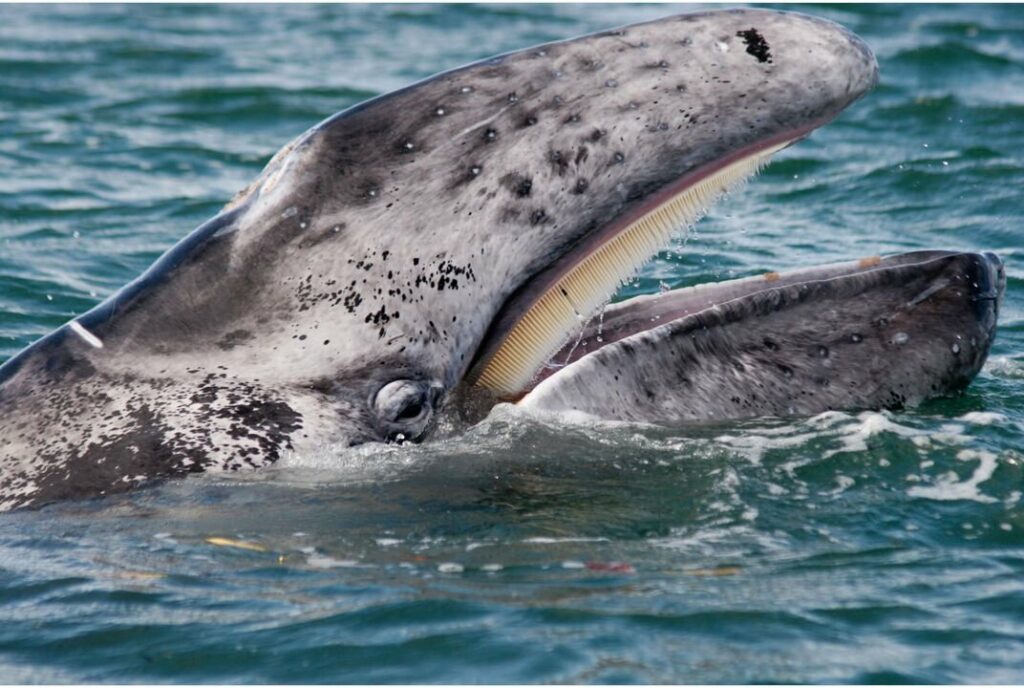
If you want to learn more about gray whale conservation efforts, check out the NOAA page HERE
WHERE TO WATCH:
While watching from a boat can be a fun experience, due to Covid there are no excursions going out this whaling season so far (December – January).
If you wish to keep updated on if charters will be going out, these are our favorites near our homes:
- YAQUINA BAY CHARTERS | NEWPORT, OR | 1-866-465-6801
- MARINE DISCOVERY TOURS | NEWPORT, OR | 541 -265-6200
- WHALE RESEARCH ECOEXCURSIONS | DEPOE BAY, OR | 541-912-6734
- WHALE’S TAIL CHARTERS | DEPOE BAY, OR | 541-921-1323
If charters aren’t running, or you don’t feel comfortable, these are the best places to whale watch on the Oregon Coast near our homes:
- DEPOE BAY WHALE WATCHING CENTER | DEPOE BAY, OR | 1-800-551-6949
- Closed due to Covid-19, but you can still watch from outside
- BEVERLEY BEACH STATE PARK | NEWPORT, OR
- ROCKY CREEK STATE SCENIC VIEWPOINT | DEPOE BAY, OR
- CAPE FOULWEATHER | DEPOE BAY, OR
- DEVIL’S PUNCHBOWL STATE NATURAL AREA | OTTER ROCK, OR
- YAQUINA HEAD OUTSTANDING NATURAL AREA | NEWPORT, OR | 541-574-3100
- The lighthouse and interpretive center are currently closed due to Covid-19, but you can still watch from outside
- DON DAVIS CITY PARK | NEWPORT, OR | 541-574-5878
- CAPE PERPETUA INTERPRETIVE CENTER | YACHATS, OR | 541-547-3289
- Closed due to Covid-19, but you can still watch from outside
WHAT YOU NEED AND HOW TO WATCH:
The best way to spot a whale is to scan the horizon for spouts, which can reach up to 12 feet in the air. Once you’ve seen a spout, use binoculars to get a closer look.
- Binoculars
- Hat
- Wind-breaker
- Water-proof boots
- Camera
- Blanket
